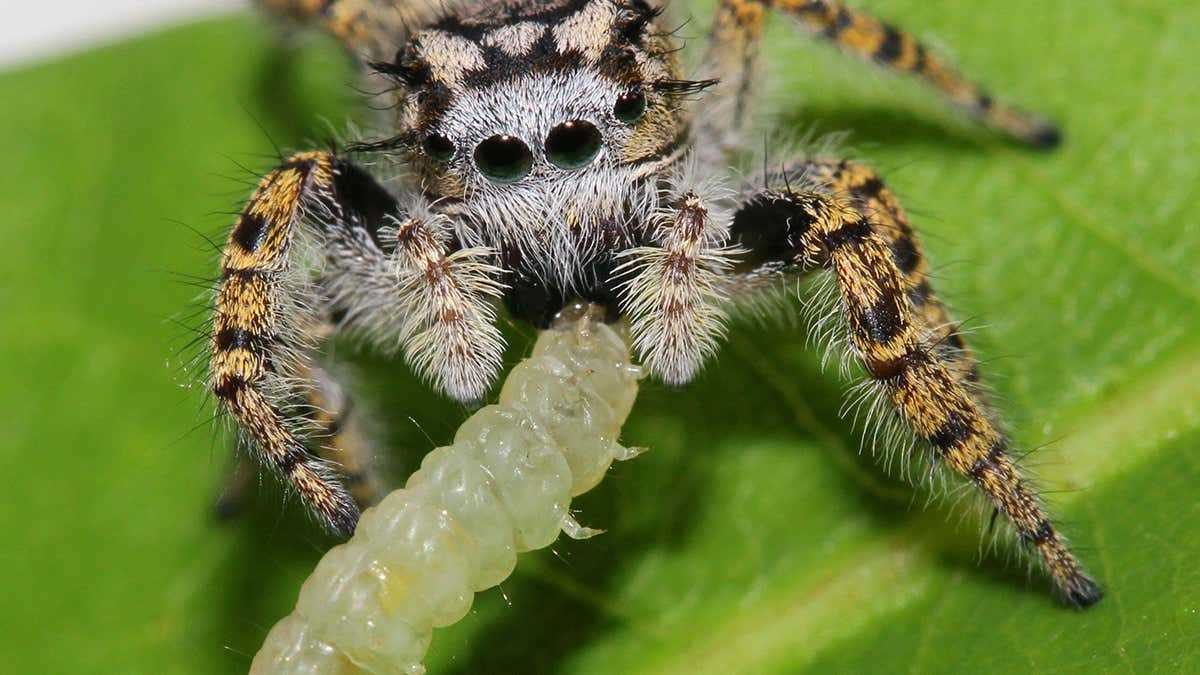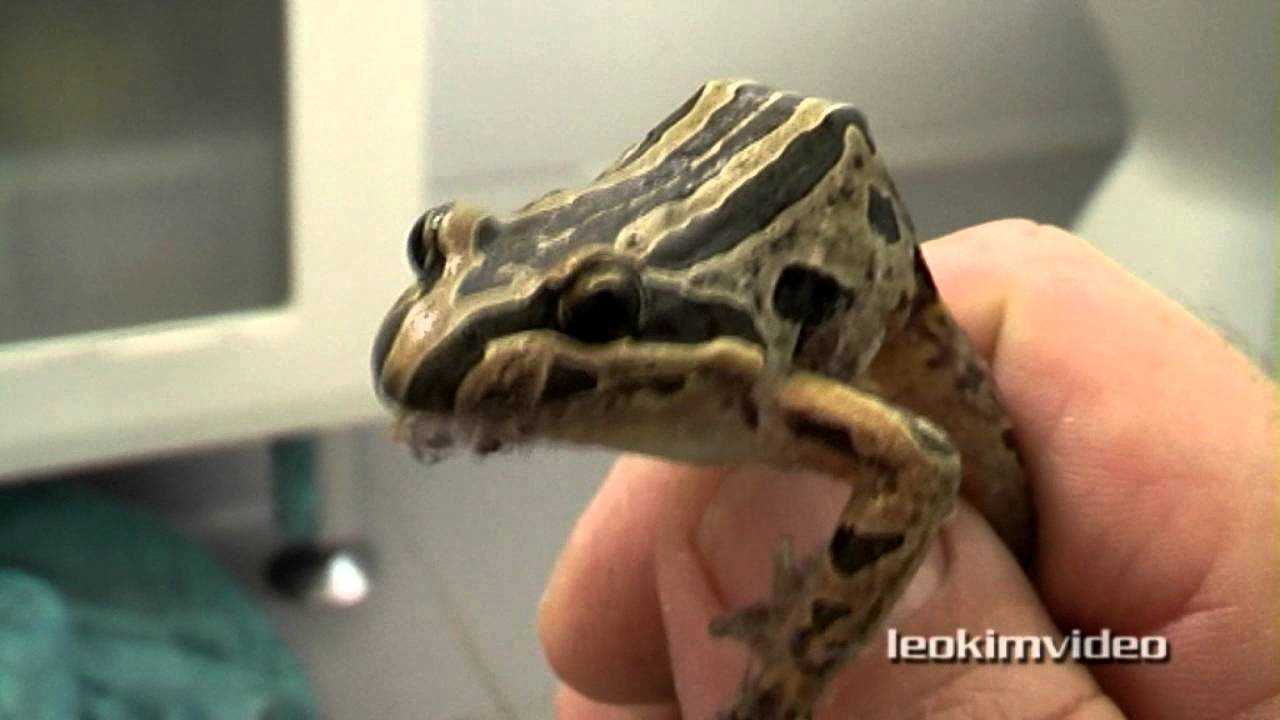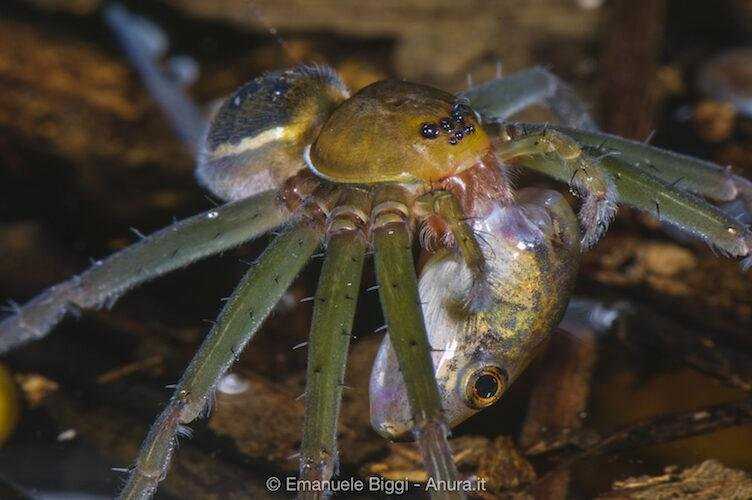Frogs are fascinating creatures that inhabit various ecosystems around the world. Known for their vibrant colors and unique croaking sounds, frogs are often associated with wetlands and lakes. These amphibians are well-known predators, feeding on a diverse range of invertebrates and small vertebrates. But are spiders part of their diet?
The answer is yes, frogs do eat spiders! Many frog species have been observed hunting and consuming spiders as part of their natural diet. With their long, sticky tongues and lightning-fast reflexes, frogs are perfectly adapted to catch and devour their unsuspecting prey, including spiders.
Interestingly, frogs have developed specific techniques to hunt spiders. Some species use their tongues to catch spiders that are lurking in the webs, while others rely on their agility and quick movements to chase down the spiders on the ground. Regardless of the method, spiders provide a nutritious source of food for frogs, helping them thrive in their environment.
Frog Species
Common Frog Species that Eat Spiders
Spiders are a common prey for various frog species. Frogs are natural predators of spiders and play an important role in controlling spider populations in their ecosystems. Let’s explore some common frog species that eat spiders:
1. Green Tree Frogs
2. Bullfrogs
3. Leopard Frogs
Leopard frogs are another species of frog that include spiders in their diet. These frogs are native to North America and are often found near bodies of water, such as ponds and marshes. They have a keen sense of sight and are skilled jumpers, allowing them to catch spiders with precision.
Tree Frog Species
Characteristics and Adaptations

Tree frogs have several characteristics that help them survive and thrive in their arboreal habitat. One of their most distinctive features is their adhesive toe pads, which allow them to cling to surfaces and climb trees with ease. These toe pads are covered in microscopic hairs that create a suction-like effect, keeping the frog firmly attached to branches and leaves. This adaptation also enables tree frogs to walk on vertical surfaces and even hang upside down.
In addition to their toe pads, tree frogs have long, slender legs that help them jump from tree to tree. They also have large, bulging eyes that provide excellent vision, allowing them to spot their prey and predators from a distance. Some tree frog species have vibrant colors and patterns on their skin, helping them blend into their surroundings or warn predators of their toxicity.
Diet and Feeding Habits
Tree frogs are insectivores, meaning they primarily eat small invertebrates such as insects and spiders. Their diet consists of various types of prey, including flies, crickets, moths, and beetles. As predators, tree frogs use their long, sticky tongues to capture their prey. They can flick their tongues out rapidly, catching insects and spiders in a split second.
Frogs and Spider Predation
Frogs, including tree frogs, are indeed natural predators of spiders. They play an essential role in regulating the population of spiders within their habitats. As spiders are common prey for tree frogs, they actively hunt and consume them as part of their diet.
The predator-prey relationship between frogs and spiders is fascinating. Tree frogs use their visual acuity and lightning-fast tongue reflexes to capture spiders hiding among foliage. Their ability to climb trees and hang from leaves gives them an advantage in stalking and ambushing unsuspecting spiders.
The benefits of frogs as spider predators are numerous. By feeding on spiders, frogs help control their population, preventing their numbers from becoming too large. This, in turn, helps maintain a balance in the ecosystem and prevents an overpopulation of spiders, which can have adverse effects on other organisms.
Other Natural Predators of Spiders
In addition to frogs, there are other natural predators of spiders. These include birds, snakes, lizards, and other arachnids such as scorpions. Each predator has its own method of capturing and consuming spiders, contributing to the regulation of their population.
Overall, tree frogs are valuable allies in the battle against spider populations. Their unique adaptations and feeding habits make them effective spider predators, helping to maintain a healthy equilibrium in the natural world.
Spider Species
Spiders are a diverse group of arachnids that are found all over the world. There are over 45,000 known species of spiders, and they can be found in a variety of habitats, from forests to deserts to your own backyard. Spiders come in many different shapes, sizes, and colors, and they have adapted to different environments and prey.
Spiders primarily eat insects, but they also prey on other small animals like small frogs, lizards, and even other spiders. They use their venom to immobilize their prey and then wrap them in silk to consume later. Some larger spider species can even eat small birds or bats.
Spiders have evolved different hunting strategies and adaptations to catch their prey. Some spiders actively hunt their prey, using their speed and agility to catch insects or other spiders. Others, like orb-weavers, build complex webs to trap their prey. The prey gets caught in the sticky silk threads and is unable to escape, allowing the spider to come and feed on it later.
Frog and Spider Interaction


Frogs use different strategies to catch spiders. Some species may wait patiently for a spider to come within striking distance and then quickly snap it up with their long, sticky tongue. Other frog species may actively search for spiders by hopping between leaves and branches, using their acute vision to spot and capture their prey.
The relationship between frogs and spiders can be seen as a predator-prey dynamic. Frogs prey on spiders as a source of food, while spiders try to evade capture by employing their quick reflexes and silk-spinning capabilities. This interaction is an example of the natural balance in ecosystems, where predators help control the population of their prey species.
There are benefits to frogs acting as predators of spiders. By consuming spiders, frogs help regulate their populations and maintain a healthy balance in the ecosystem. This can be particularly beneficial in areas where there is an abundance of spiders, as it helps prevent their overpopulation and potential negative impacts on other organisms.
It is worth noting that frogs are not the only natural predators of spiders. There are other animals, such as birds, lizards, and certain insects, that also prey on spiders. However, frogs play an important role in controlling spider populations and contribute to the overall biodiversity of ecosystems.
Frog and Spider Interaction
Interactions between frogs and spiders are a common occurrence in various habitats. Frogs are natural predators of spiders and play a crucial role in maintaining the balance of ecosystems.
There are several factors that contribute to the predator-prey relationship between frogs and spiders. The size and species of the frog and spider can determine the outcome of their interaction. Larger frog species tend to prey on larger spider species, while smaller frogs target smaller spiders.
It is worth noting that frogs are not the only natural predators of spiders. There are other animals, such as birds and reptiles, that also feed on spiders. However, frogs have unique hunting abilities and are particularly effective at catching spiders due to their specialized tongue and quick reflexes.
Predator-Prey Relationship
Frogs are predators that have evolved to be highly skilled hunters. They have specialized adaptations such as long tongues and sticky pads on their feet, which allow them to catch and consume small insects and arthropods, including spiders.
When a frog encounters a spider, it will often attempt to capture it by extending its tongue rapidly and accurately towards the prey. The sticky surface of the frog’s tongue allows it to effectively trap the spider, after which the frog will quickly retract its tongue and consume the captured spider.
The predator-prey relationship between frogs and spiders is beneficial for both parties in different ways. For frogs, spiders provide a source of nutrition and energy. Spiders are rich in proteins and nutrients that are essential for the growth and survival of frogs.
On the other hand, the presence of frogs as natural predators helps to control the population of spiders. Spiders can sometimes become pests, especially when they occur in high numbers. By preying on spiders, frogs help to maintain a balance in spider populations, preventing them from reaching unsustainable levels.
| Benefits of Frogs as Spider Predators |
|---|
| Frogs consume spiders as part of their diet, providing them with nutrition and energy. |
| Frogs help to control spider populations, preventing them from becoming pests. |
| The predator-prey relationship between frogs and spiders is an important ecological interaction. |
| Frogs have specialized adaptations that allow them to effectively hunt and consume spiders. |
Benefits of Frogs as Spider Predators
Frogs play a crucial role in controlling spider populations in various ecosystems. As natural predators, they help maintain the balance of these arachnids, ensuring they do not become overabundant and potentially disrupting the ecosystem.
One of the main benefits of frogs as spider predators is their ability to consume a large number of spiders in a relatively short period. Frogs are voracious eaters and have specially adapted tongues that allow them to catch spiders and other prey with precision. This feeding behavior helps keep spider populations in check, preventing them from reaching pest status.
Furthermore, frogs have a diverse diet that includes various types of spiders, such as orb-weavers, wolf spiders, and jumping spiders. By targeting multiple spider species, frogs prevent any one species from dominating the ecosystem, promoting biodiversity.
In addition to their unmatched feeding efficiency, frogs also provide indirect benefits in their role as spider predators. When spiders are consumed by frogs, they are removed from the environment, reducing their impact on other organisms. This can benefit plants and other animals that might be negatively affected by spiders, such as crop plants or beneficial insect populations.
Frogs also help control spider populations in areas where spiders may pose a threat to humans. For example, certain species of venomous spiders can be found in residential areas, and their population growth can become a concern. By preying on spiders, frogs help minimize the risk of spider bites and potential health issues.
Other Natural Predators of Spiders
In addition to frogs, there are several other natural predators of spiders. These predators play an important role in controlling spider populations and maintaining a balanced ecosystem.
1. Birds
2. Insects
Overall, frogs are not the only natural predators of spiders. Birds and certain insects also play an important role in controlling spider populations, contributing to the overall balance of the ecosystem.

I’m Lena Adams—a product of an unconventional upbringing in the African wilderness. My father, a daring explorer of African wildlife, sparked my fascination with reptiles, a passion that intertwined with the tragic loss of my mother during an expedition, leaving an indelible mark on my life. Driven to understand the creatures that captivated my parents, I embarked on my journey, sharing insights about reptiles, frogs, and lizards on my website. Through my explorations and conservation efforts, I honour my family’s legacy while seeking connections—to the creatures, nature, and the mother whose presence I yearn to understand.
